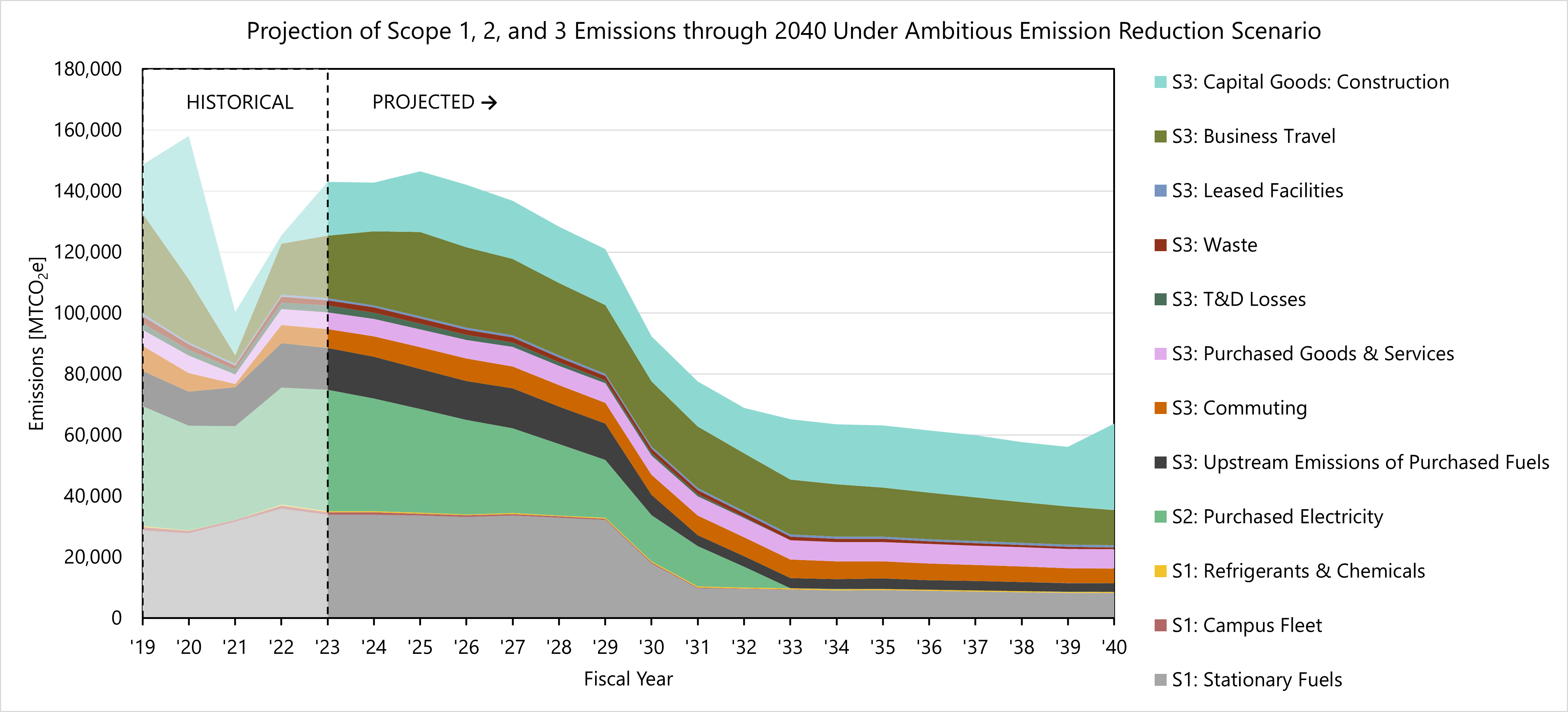University Emissions Inventory Development, Analysis, and Modeling

Project Brief
The Challenge
A higher education client needed support to address various aspects of their emissions inventory, management, and planning. The university sought ERG's expertise to conduct a thorough review of historical emissions inventories, align previous inventories with current protocol standards, update historical activity data, resolve data gaps, create new inventories for recent years, and develop projections of future emissions pathways.
ERG's Solution
ERG conducted a comprehensive series of tasks, beginning with a third-party verification of scope 1 and 2 inventories from fiscal years 2006 through 2020. To ensure year-to-year methodological consistency and transparency, ERG recalculated the historical inventories using the Sustainability Indicator Management & Analysis Platform (SIMAP®), a protocol-compliant accounting tool that is widely used by colleges, universities, and other campus-based organizations. ERG completed new FY 2021 and FY 2022 inventories, quantifying scope 1 emissions (direct emissions) and scope 2 emissions (indirect emissions from the generation of purchased energy) from all owned and operated campuses and facilities. We also created visualizations and analysis of emissions sources and trends.
Under a follow-on contract, ERG assisted the university in measuring, for the first time, emissions from select scope 3 categories (indirect emissions resulting from the university’s activities from sources outside its direct control). These categories included purchased food, paper, and electronics; new construction and renovations; faculty, staff, and student commuting; business travel; solid waste; wastewater; transmission and distributions losses; upstream emissions of purchased fuels; and leased facilities. ERG conducted scenario modeling for the university's scope 1, 2, and 3 emissions out to 2040, exploring business-as-usual, conservative, and aggressive emission reduction pathways based on various assumptions, including campus growth, shifting of the electricity supply, and sustainability commitments made by the university and the city within which it resides. ERG documented all methodologies and results in two summary memos, presented key findings to management, and provided valuable insights to help the university monitor and reduce its future environmental impacts.
Client
Undisclosed university